Preface
Contents
1 Introduction
1.1 Riemann Mapping Theorem
1.2 Holomorphic Differential
1.3 Uniformization Theorem
1.4 Shape Space
1.5 Geometric Structures
Part I Computational Algorithms
2 Topological Algorithms
2.1 Halfedge Data Structure
2.2 Cut Graph and Fundamental Domain
2.3 Homotopy and Homology Group Basis
2.4 Canonical Homotopy Group Generators
3 Harmonic Map
3.1 Discrete Harmonic Energy
3.2 Topological Disk Surfaces
3.3 Topological Sphere Surfaces
3.4 Riemann Mapping
4 Harmonic and Holomorphic Forms
4.1 Characteristic Forms
4.2 Cohomology Basis
4.3 Harmonic 1-Form
4.4 Hodge Star Operator
4.5 Holomorphic 1-Form
5 Discrete Ricci Flow
5.1 Discrete Background
5.2 Discrete Surface Ricci Flow
5.3 Isometric Planar Embedding
5.4 Hyperbolic Ricci Flow
5.5 Isometric Hyperbolic Embedding
Part II Engineering Applications
6 Computer Graphics
6.1 Introduction
6.2 Global Surface Parametrization
6.2.1 Optimal Global Conformal Parametrization Using Discrete One-Form
6.2.2 Global Conformal Parameterization Using Discrete Euclidean Ricci Flow
6.3 Uniform Remeshing
6.3.1 Voronoi Diagram in Different Spaces
6.3.2 Centroid Voronoi Tessellation in Different Spaces
6.3.3 CVT Energy in Different Spaces
6.3.4 Computing Centroidal Voronoi Tessellations
6.3.5 Uniform Remeshing and Partition
6.4 Metric-Driven RoSy Fields Design
6.4.1 Theory of Compatibility
6.4.2 Computing N-RoSy Fields
6.4.3 Remeshing
6.4.4 Celtic Knot on Surfaces
6.4.5 Pen-and-Ink Sketching of Surfaces
6.5 Computing Shortest Homotopic Cycles on Polyhedral Surfaces
6.5.1 Geodesic Uniqueness
6.5.2 Fuchsian Group Method
6.5.3 Birkhoff Curve Shortening Method
6.5.4 Extremal Quasiconformal Mapping
6.5.5 Homotopy Detection
6.6 Summary and Further Reading
7 Computer Vision
7.1 Introduction
7.2 Teichmuller Shape Space
7.2.1 Luo Coordinates
7.2.2 Fenchel-Nielsen Coordinates
7.2.3 Robustness of Teichmuller Space Coordinates
7.2.4 Surface Indexing and Classification
7.3 3D Facial Shape Index
7.3.1 Generalized Discrete Ricci Flow
7.3.2 Doubly Connected Domain
7.3.3 Multiply Connected Domain
7.4 Shape Signature
7.4.1 Beltrami Equation
7.4.2 Conformal Module
7.4.3 Holomorphic Differentials
7.4.4 Conformal Welding
7.4.5 Computing Shape Signatures of Planar Domains
7.4.6 Shape Clustering
7.5 Summary and Further Reading
8 Geometric Modeling
8.1 Introduction
8.2 Triangular B-Splines
8.2.1 Definition
8.2.2 Properties
8.2.3 Surface Reconstruction
8.3 Theoretical Foundation of Manifold Splines
8.3.1 Definitions and Concepts
8.3.2 Equivalence to Affine Atlas
8.3.3 Existence
8.4 Constructing Affine Atlas
8.4.1 Computing Affine Structure Using Holomorphic 1-form
8.4.2 Computing Affine Structure Using Discrete Ricci Flow
8.4.3 Computing Affine Structure Using Polycube Maps
8.5 Extending Planar Splines to Manifold Domains
8.5.1 Manifold Triangular B-spline
8.5.2 Manifold Powell–Sabin Spline
8.5.3 Manifold T-spline
8.6 Handling Extraordinary Points
8.7 Discussions
8.7.1 Domain Manifold
8.7.2 Manifold Splines Versus Planar Splines
8.7.3 Manifold Splines Versus Spherical Triangular B-Splines
8.7.4 Manifold Splines Versus Subdivision Surfaces
8.7.5 General Manifold Spline Program
8.8 Summary
9 Medical Imaging
9.1 Introduction
9.2 Brain Surface Conformal Parameterization
9.2.1 Spherical Brain Conformal Parameterization
9.2.2 Planar Brain Conformal Parameterization with Holomorphic Functions
9.2.3 Hyperbolic Brain Conformal Parameterization with Ricci Flow Method
9.3 Brain Surface Registration
9.3.1 Optimization of Brain Conformal Mapping with Landmarks
9.3.2 Constrained Harmonic Map
9.3.3 Hyperbolic Harmonic Map
9.3.4 Surface Fluid Registration
9.4 Global Transformation-Invariant Shape Descriptors
9.4.1 Spherical Harmonic Analysis Based Rotation Invariant Shape Descriptor
9.4.2 Conformal Welding Based Teichmüller Shape Descriptor
9.4.3 Teichmüller Space Coordinates for Landmark Curve-Based Brain Morphometry Analysis
9.4.4 Riemannian Optimal Mass Transport Map and Riemannian Wasserstein Distance
9.5 Point-to-Point Local Surface Deformation Measurements
9.5.1 Genetic Influence of APOE4 Genotype on Hippocampal Morphometry
9.5.2 Ventricular Abnormalities in Mild Cognitive Impairment
9.5.3 Computer-Assisted Diagnosis with Computational Conformal Geometry
9.6 Summary
10 Wireless Sensor Networks
10.1 Introduction
10.2 Localization
10.2.1 Planar Sensor Network Localization
10.2.2 Surface Sensor Network Localization
10.3 Greedy Routing
10.3.1 3D Wireless Sensor Networks Without Hole
10.3.2 3D Wireless Sensor Networks with Internal Holes
10.4 Deployment
10.4.1 Optimal Surface Network Deployment
10.4.2 Optimal Solution
10.4.3 Decreased Sensing Unreliability
10.4.4 Unreliability Function
10.4.5 Special Scenarios
10.5 In-Network Data-Centric Processing
10.5.1 Double-Ruling in 3D Network
10.5.2 Data Replication
10.5.3 Data Retrieval
10.5.4 Delivery of Data and Query
10.5.5 Storage
10.6 Marching of Autonomous Networked Robots
10.6.1 Optimal Marching Problem
10.6.2 An Approximated Solution
10.6.3 Modified Harmonic Map
10.6.4 Minor Local Adjustment
10.6.5 Global Connectivity
10.6.6 Moving Distance
10.6.7 Holes
10.7 Summary and Further Reading
References
Index
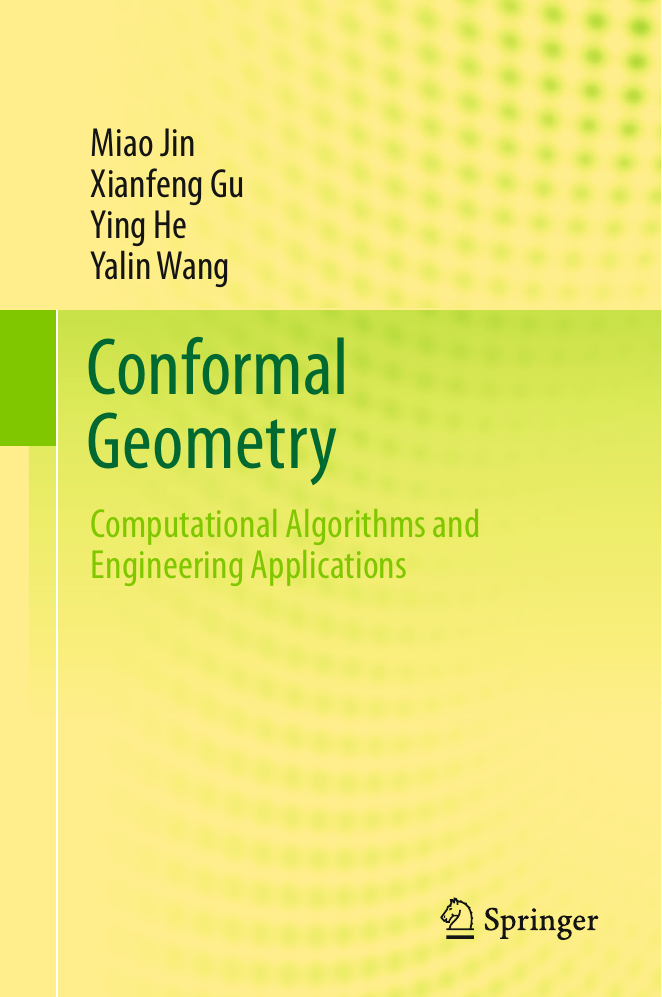
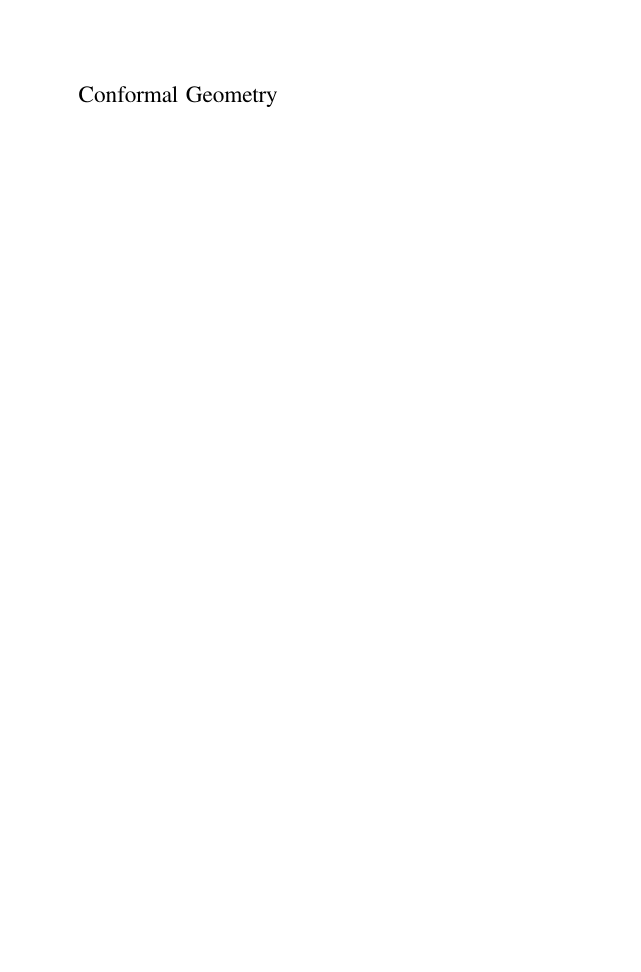
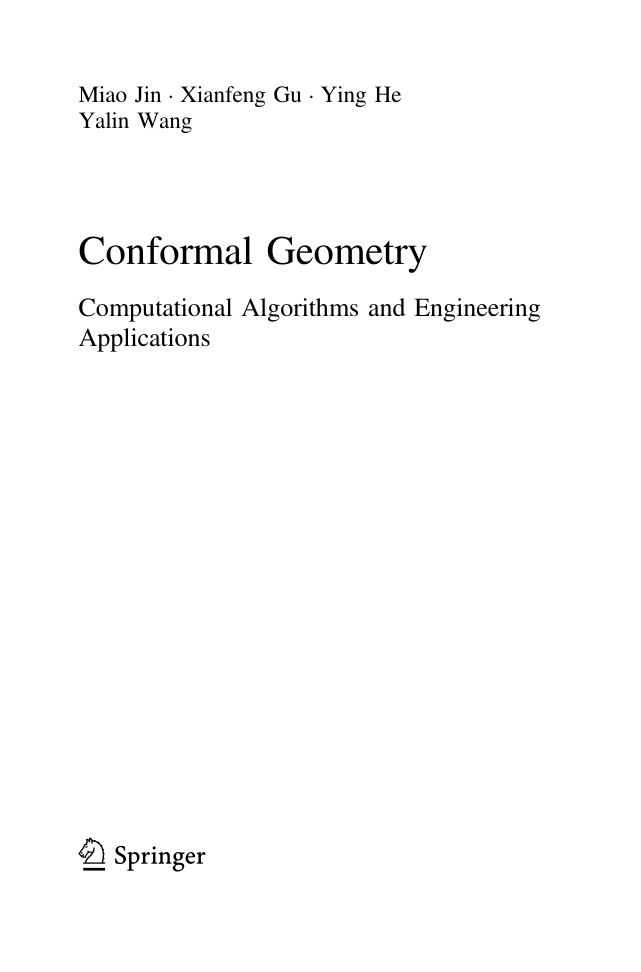
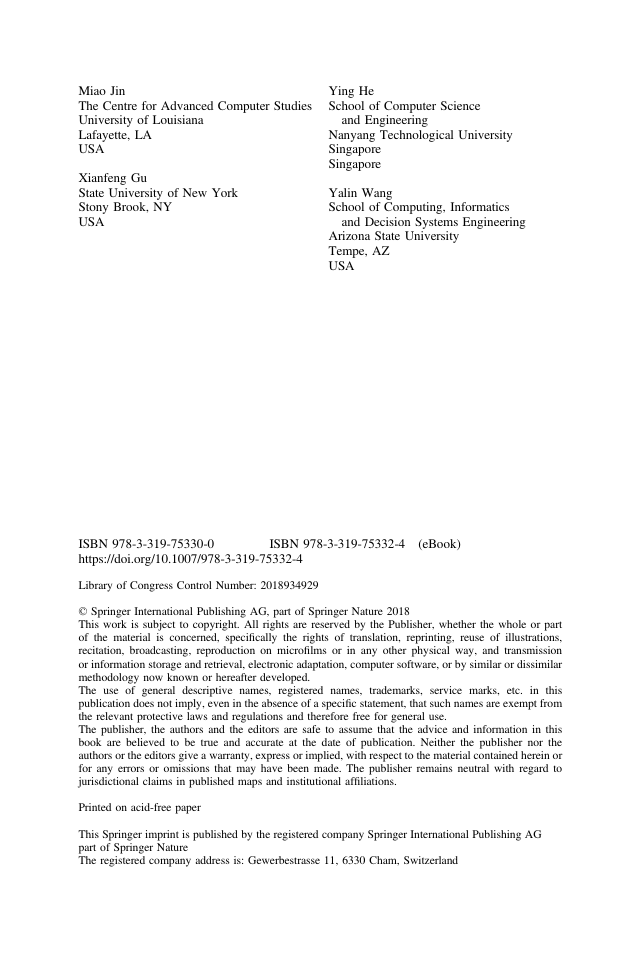

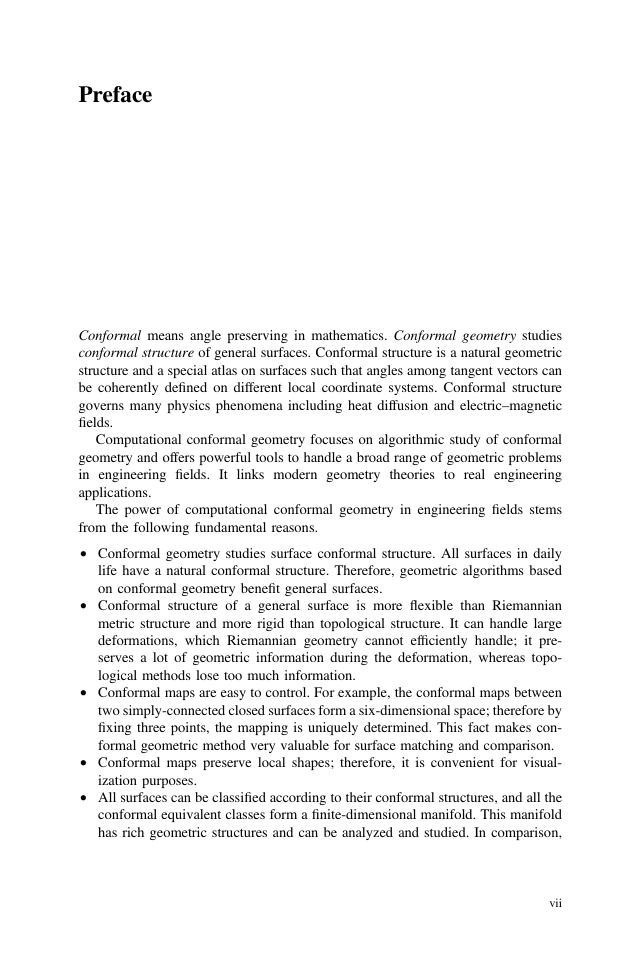
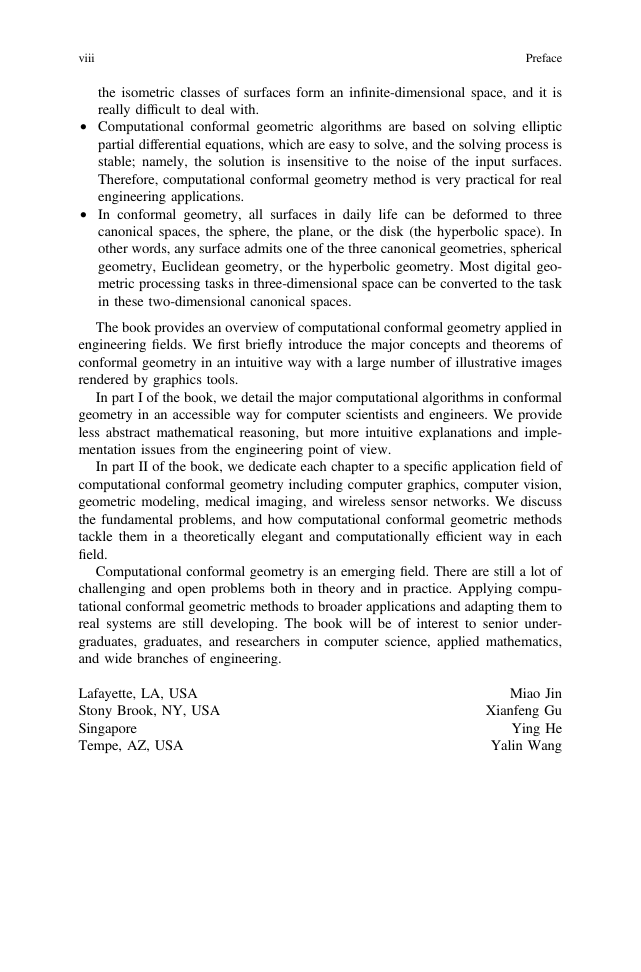
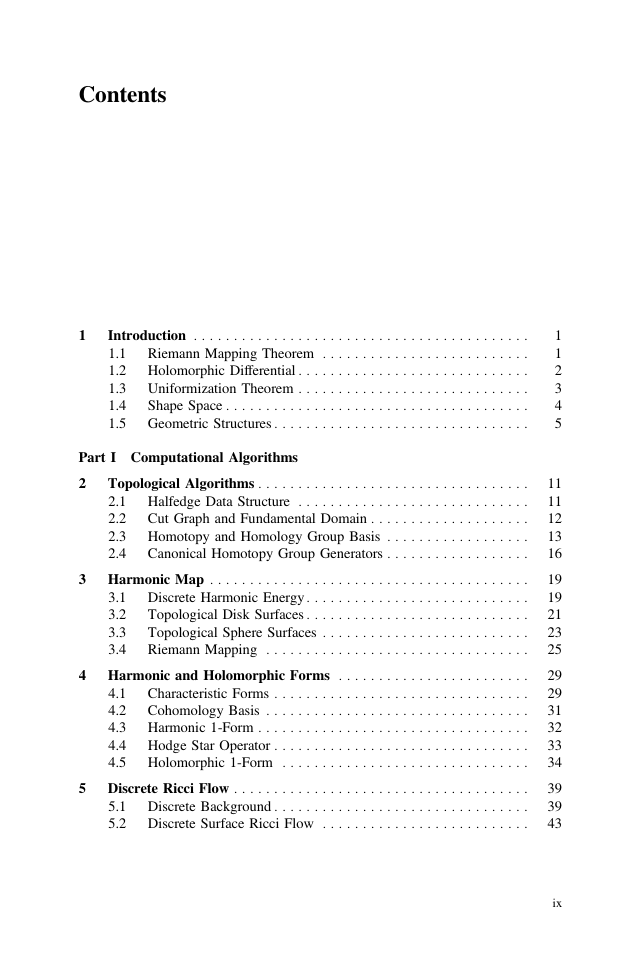








 2023年江西萍乡中考道德与法治真题及答案.doc
2023年江西萍乡中考道德与法治真题及答案.doc 2012年重庆南川中考生物真题及答案.doc
2012年重庆南川中考生物真题及答案.doc 2013年江西师范大学地理学综合及文艺理论基础考研真题.doc
2013年江西师范大学地理学综合及文艺理论基础考研真题.doc 2020年四川甘孜小升初语文真题及答案I卷.doc
2020年四川甘孜小升初语文真题及答案I卷.doc 2020年注册岩土工程师专业基础考试真题及答案.doc
2020年注册岩土工程师专业基础考试真题及答案.doc 2023-2024学年福建省厦门市九年级上学期数学月考试题及答案.doc
2023-2024学年福建省厦门市九年级上学期数学月考试题及答案.doc 2021-2022学年辽宁省沈阳市大东区九年级上学期语文期末试题及答案.doc
2021-2022学年辽宁省沈阳市大东区九年级上学期语文期末试题及答案.doc 2022-2023学年北京东城区初三第一学期物理期末试卷及答案.doc
2022-2023学年北京东城区初三第一学期物理期末试卷及答案.doc 2018上半年江西教师资格初中地理学科知识与教学能力真题及答案.doc
2018上半年江西教师资格初中地理学科知识与教学能力真题及答案.doc 2012年河北国家公务员申论考试真题及答案-省级.doc
2012年河北国家公务员申论考试真题及答案-省级.doc 2020-2021学年江苏省扬州市江都区邵樊片九年级上学期数学第一次质量检测试题及答案.doc
2020-2021学年江苏省扬州市江都区邵樊片九年级上学期数学第一次质量检测试题及答案.doc 2022下半年黑龙江教师资格证中学综合素质真题及答案.doc
2022下半年黑龙江教师资格证中学综合素质真题及答案.doc